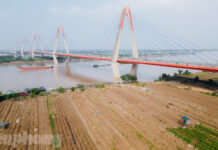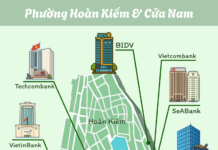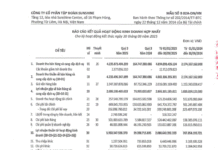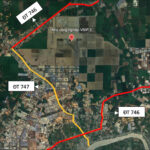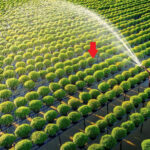Over 20 years ago, on May 18, 2003, as the country solemnly prepared to commemorate the 113th birthday of President Ho Chi Minh (May 19, 1890 – May 19, 2003), construction of the Bai Chay Bridge project was officially inaugurated in Ha Long City.
After 40 months of construction, on December 2, 2006, the Bai Chay Bridge was inaugurated and put into use. This bridge once held a world record (in 2006) for its main span length of 435 meters, a concrete structure with prestressed steel, box girders suspended from a plane of cables in the middle. The second bridge with the same structure is the Elom Bridge in France with a corresponding main span length of only 400 meters. The third is the famous Sunshine Skyway Bridge in the US, which is just 366 meters long. Some other bridges with similar structures include the Brotonne Bridge in France with a span of 320 meters and the Puenete Coatzacoaltos Bridge in Mexico with a main span of 288 meters.
Since then, many more cable-stayed bridges with longer main spans have been constructed worldwide. Larger bridges such as the Russky Bridge in Russia (1104 meters) and the Sutong Bridge in China (1088 meters) have surpassed the achievements of the Bai Chay Bridge.
This project was funded by Japanese ODA loans and government matching funds, with a total investment of 2,140 billion VND. Many advanced construction technologies and techniques were applied for the first time in Vietnam, such as the construction method of caisson foundation with compressed air, and Shinco pile foundation. Mr. Kyoshi Yoshida, a Japanese expert, highly appreciated the ability of Vietnamese engineers to receive and master the construction technology.
The Bai Chay Bridge features a unique design with the highlight being the cables connected to a vertical plane of cables. From above, the bridge resembles a giant musical instrument occupying a vast space. The bridge is 2,487 meters long and 25.3 meters wide, with four lanes for motor vehicles and two lanes for pedestrians. The main bridge is 435 meters long, with a central span of the same length.
The approach to the bridge is a 5-kilometer urban road with eight lead bridges with a total length of 1,172 kilometers. The bridge is designed to withstand earthquakes up to magnitude 7. The bridge towers are 90 meters high, ensuring the bridge can withstand any harsh weather conditions. This is a modern technology only used in developed countries.
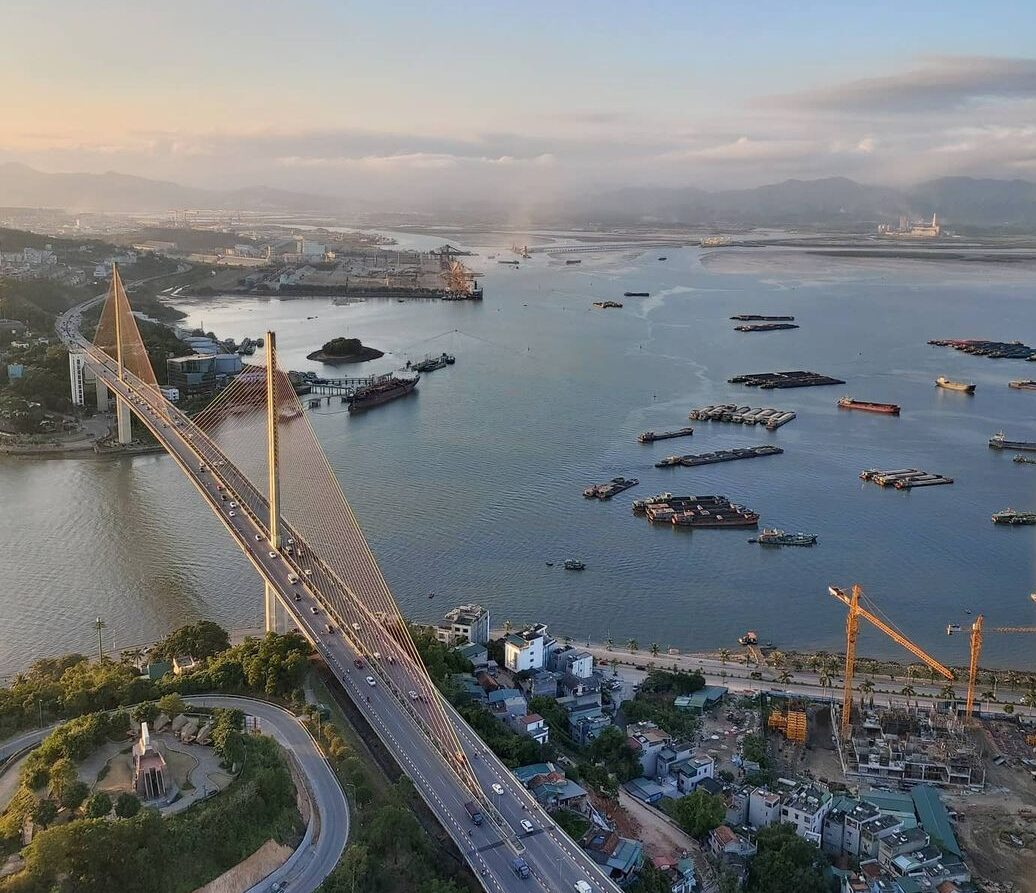
It took 20 years for this bridge to be truly completed after many changes, but it only took 40 months to construct and officially inaugurate the Bai Chay Bridge.
For the first time in Vietnam, two straight bridge towers were applied on a caisson foundation with heavy-duty compressed air. With the Bai Chay Bridge, this has even greater importance. Because the Cua Luc sea mouth, which the bridge crosses, is the channel to the deep-water port of Cai Lan and the shipyard industrial park with a capacity of over 10,000 tons. Therefore, ensuring the safety of ships and boats entering the port is mandatory. The Bai Chay Bridge, designed 50 meters above sea level and 130 meters wide, meets these requirements, ensuring that ships with a capacity of 50,000 tons can pass through safely.
It took 20 years for this bridge to be truly completed after many changes, and the construction project was approved. Although it was a large-scale bridge with complex techniques, after just over 40 months of construction, on December 2, 2006, the Bai Chay Bridge was officially inaugurated and put into use (completing ahead of schedule by about 3 months).
In late 2014, a business sponsored a lighting system worth 40 billion VND, consisting of 8,888 LED lights with 16 million colors, commonly featuring shades of red, yellow, orange, green, blue, indigo, and violet. The LED lights transformed the Bai Chay Bridge into a dazzling light show at night, enhancing the beauty of Ha Long Bay.
With its sleek and modern architecture, the Bai Chay Bridge brings a new architectural feature, enhancing the beauty of Ha Long Bay. The land of Quang Ninh has another landmark to remember, a mark of modern infrastructure with high aesthetics in a truly romantic setting, just as a musician once likened the Bai Chay Bridge to the “Ha Long Harp” – a new wonder created by the intelligence and hard work of humans, in harmony with the wonder of nature – Ha Long Bay.
Before the construction of the Bai Chay Bridge, all transportation relied on ferries. The two ferry terminals were parallel to the bridge. When the Bai Chay Bridge became operational, it also marked the end of the historical mission of the Bai Chay Ferry Terminal, which had been in operation for over 50 years. From then on, all means of transportation from Hanoi to Mong Cai (Quang Ninh) – the northernmost point of the country, no longer needed ferries. This has a special significance for the socio-economic development not only of Quang Ninh but also of the entire northern region.
The Industrial Revolution: Unveiling a Mega Factory and a District-Sized Construction Site with a $1.3 Billion Vision
The VSIP 3 Industrial Park, spanning an impressive 10 square kilometers (that’s one and a half times the size of District 1 in Ho Chi Minh City), is a burgeoning hub of economic activity. Even before its completion, the park has already attracted eight significant projects, boasting a total investment of 1.6 billion USD. The star attraction is undoubtedly the world’s largest mega-factory by the renowned LEGO Group.
The Farmer’s Miracle: Turning Barren Land into Golden Soil, Reaping $160,000 in Annual Profits.
In 2023, the orchard reaped a remarkable 6.8 billion VND in revenue. After deducting all expenses, the farmer was left with an impressive profit of 4 billion VND.



